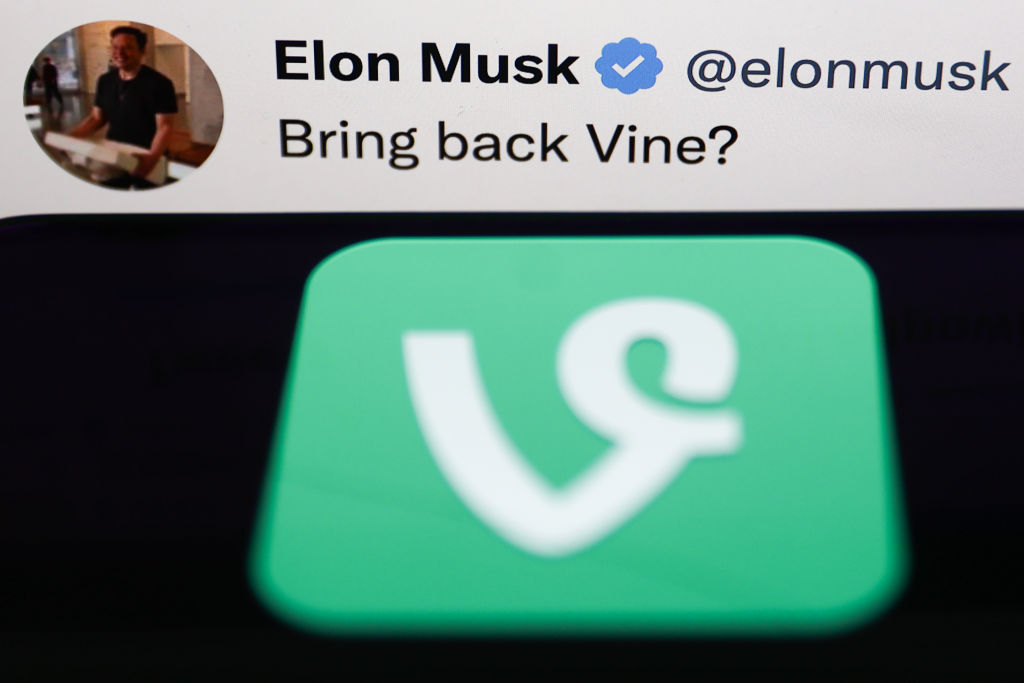
If there’s one thing Elon Musk should know, it’s this: Vine is dead; let it rest. On Sunday, Musk—who recently bought Twitter for $44 billion and is now the app’s owner—tweeted a poll asking if he should bring Vine back. With over four million responses, the vote resulted in 69.6% of people saying “Yes.” Popular YouTuber Mr. Beast replied to his tweet, saying, “If you did that and actually competed with [TikTok] that would be hilarious.” Musk then asked what he could do to make Vine’s resurrection better than TikTok. Mr. Beast said there’s no such thing as originality at this point because every major social platform is trying to mimic TikTok. His best advice: “Whatever [you] do, make it hard to copy, or it’s a waste of time, [in my opinion].” Now, there are reports that Musk is trying to play Dr. Frankenstein with Vine’s old code base and create his digital monster to bring Vine back from the dead by the end of the year.
But Musk has bulldozed through his first couple of days in charge, and the world is in a far different place than it was in 2012, when Vine launched. Although Vine has an impassioned fanbase of people who were young adults when the platform was in its prime and would like to see it come back, the Vine that we all knew and loved is gone, and we should let it rest in peace.
What is Vine and why was it so beloved?
Vine launched in June 2012 and was founded by Rus Yusupov, Dom Hofmann, and Colin Kroll. It came at a time when people were just starting to get smartphones en masse, and because of this, its popularity skyrocketed. In more ways than one, Vine was the blueprint for many of the short-form video features we see on social media platforms today: YouTube Shorts, Instagram Reels, Snapchat Discover, and, more importantly, TikTok. The 6-second videos were small bites of entertainment that led to some of the most recognizable videos on the internet: “Road work ahead, uh yeah, I sure hope it does” or “Hurrican Katrina? More like Hurricane Tortilla!” The popular videos are now immortalized in Vine compilations on YouTube that have amassed millions of views from those looking to relive its glory days. Unlike TikTok, Vine was all about comedy.
It worked similarly to TikTok, with users swiping through videos that played in endless loops. Users’ timelines relied on people’s followers rather than TikTok’s algorithmic recommendations, so the more people found creators through popular videos with a large number of views or “loops” to follow, the more content they were being served on their timelines. Multiple creators quickly became favorites: David Dobrik, Liza Koshy, Logan Paul, Christine Sydelko, and more.
Why did it shut down?
In 2012, Twitter saw the opportunity to acquire the app for $30 million and finalized the deal that October. Vine’s popularity was only growing, and for a short amount of time, the app was in its prime. That is, until Instagram introduced 15-second videos on its platform in 2013, leading marketers and advertisers to shift their support to Instagram. Not long after, some of Vine’s most significant content creators, like Koshy, Dobrik, and Paul, migrated to YouTube and Instagram. Analysts theorized that Vine couldn’t sustain a steady decline in money and users due to Instagram’s longer video content. By the time Vine increased its video limit past six seconds, it was too late, leading to its eventual shuttering in October 2016, as the New York Times reported.
Why is reviving Vine a bad idea?
Vine was the right platform for the moment when smartphones were new, and even a former Twitter employee who worked on Vine has said its a bad idea. “This code is 6+ years old,” former senior director of product management at Twitter, Sara Beykpour said in a tweet. “Some of it is 10+. You don’t want to look there. If you want to revive Vine, you should start over.”
Why go back to six-second videos when there’s already a platform that allows you to make similar short-form videos with even more flexibility on the length and far better editing capabilities? And although Musk seems laser-focused on strengthening Twitter’s business model, there’s no evidence that Vine is the way to do it. On Vine, people were making content to make it—it was far more rare to be an influencer as a side hustle. That resulted in the most wholesome and genuine content. Now it’s more common for influencers to strike up lucrative brand deals and sponsorships.
The reasons people loved it simply no longer exist: The simplicity, the silliness, and the community the app created.
By now, the internet has changed so much—with endless discourse, the spread of misinformation, and less authentic, regular content—that Vine couldn’t possibly keep up. Vine walked so that TikTok could run. If we’re nostalgic for the long-gone short-form video app, we can watch an hour-long Vine compilation.
More Must-Reads from TIME
- Cybersecurity Experts Are Sounding the Alarm on DOGE
- Meet the 2025 Women of the Year
- The Harsh Truth About Disability Inclusion
- Why Do More Young Adults Have Cancer?
- Colman Domingo Leads With Radical Love
- How to Get Better at Doing Things Alone
- Michelle Zauner Stares Down the Darkness
Write to Moises Mendez II at moises.mendez@time.com